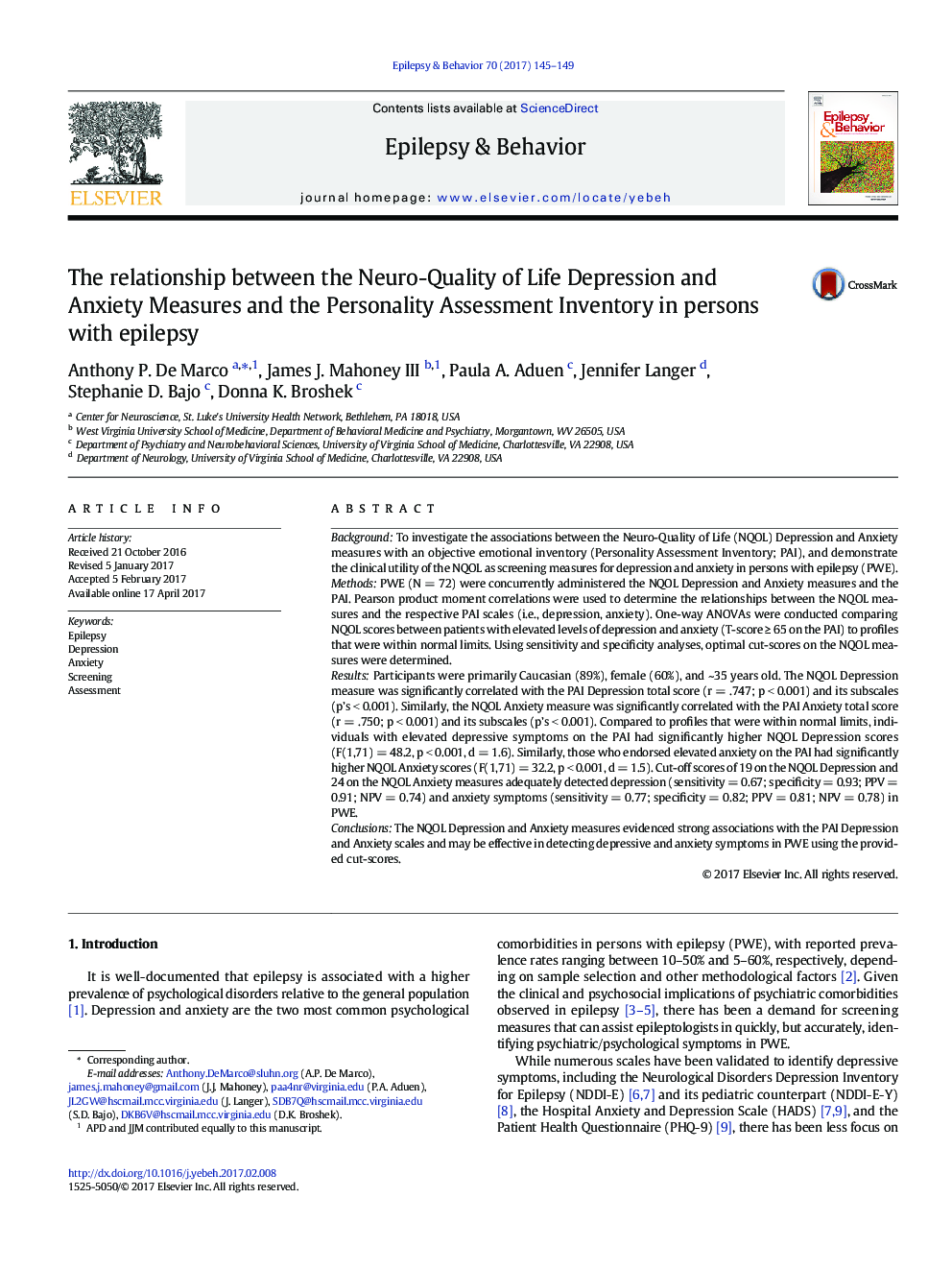| کد مقاله | کد نشریه | سال انتشار | مقاله انگلیسی | نسخه تمام متن |
|---|---|---|---|---|
| 5628297 | 1406370 | 2017 | 5 صفحه PDF | دانلود رایگان |
- NQOL Depression and Anxiety measures were strongly correlated with the PAI Depression and Anxiety scales
- Scores of 19 and 24 on the NQOL Depression and Anxiety scales, respectively, were deemed optimal for detecting symptoms in PWE
- NQOL may be an effective screening measure for assessing depression and anxiety in PWE
BackgroundTo investigate the associations between the Neuro-Quality of Life (NQOL) Depression and Anxiety measures with an objective emotional inventory (Personality Assessment Inventory; PAI), and demonstrate the clinical utility of the NQOL as screening measures for depression and anxiety in persons with epilepsy (PWE).MethodsPWE (N = 72) were concurrently administered the NQOL Depression and Anxiety measures and the PAI. Pearson product moment correlations were used to determine the relationships between the NQOL measures and the respective PAI scales (i.e., depression, anxiety). One-way ANOVAs were conducted comparing NQOL scores between patients with elevated levels of depression and anxiety (T-score â¥Â 65 on the PAI) to profiles that were within normal limits. Using sensitivity and specificity analyses, optimal cut-scores on the NQOL measures were determined.ResultsParticipants were primarily Caucasian (89%), female (60%), and ~35 years old. The NQOL Depression measure was significantly correlated with the PAI Depression total score (r = .747; p < 0.001) and its subscales (p's < 0.001). Similarly, the NQOL Anxiety measure was significantly correlated with the PAI Anxiety total score (r = .750; p < 0.001) and its subscales (p's < 0.001). Compared to profiles that were within normal limits, individuals with elevated depressive symptoms on the PAI had significantly higher NQOL Depression scores (F(1,71) = 48.2, p < 0.001, d = 1.6). Similarly, those who endorsed elevated anxiety on the PAI had significantly higher NQOL Anxiety scores (F(1,71) = 32.2, p < 0.001, d = 1.5). Cut-off scores of 19 on the NQOL Depression and 24 on the NQOL Anxiety measures adequately detected depression (sensitivity = 0.67; specificity = 0.93; PPV = 0.91; NPV = 0.74) and anxiety symptoms (sensitivity = 0.77; specificity = 0.82; PPV = 0.81; NPV = 0.78) in PWE.ConclusionsThe NQOL Depression and Anxiety measures evidenced strong associations with the PAI Depression and Anxiety scales and may be effective in detecting depressive and anxiety symptoms in PWE using the provided cut-scores.
Journal: Epilepsy & Behavior - Volume 70, Part A, May 2017, Pages 145-149
